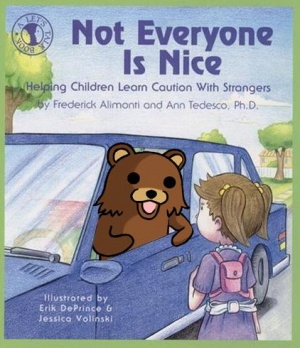Debate Guide: "Stranger danger" or "It could be anyone"

The first myth, although still viscerally potent, is slowly being replaced with the second.
Protecting a child against sexual predators is a matter of constant vigilance in every public place. Children are only safe in our homes.
Assuming that each act involving the "sexualization" of a child or minor is an abomination, this assumption is still misguided. Quite a large majority of reported cases involve someone who is known to the child or minor, with their own family being the main "threat". Any reputable source of criminal data can back this up.
In the 21st century, nobody except for a conspiracy theorist seriously disputes that it is much more likely that a child will be killed or seriously injured by a motorcar than killed or seriously injured by an abductor.
Absolutely no one can be trusted with our children. The offenders are everywhere, and we have no way of distinguishing them from safer individuals.
This newer myth is even more dangerous and flawed. It appears that both have been abused by governments and news agencies to incite fear in society.
Firstly, the statistics actually indicate that families are by far the biggest "threat" to the welfare of their children. In this sense, it would be more reasonable to distrust oneself or ones partner. As the long list of adverse consequences tells us, there is no workable, "pro-family" way of protecting children from such rare threats. What little "positive" impact superficially rational provisions may have, the result is likely to be fearful, physically aversive minors, and young adults in society at large and all the wider political and generational problems that this brings.
There are also registries and other provisions in some countries that allow people to identify offenders. These cause serious problems in and of themselves.